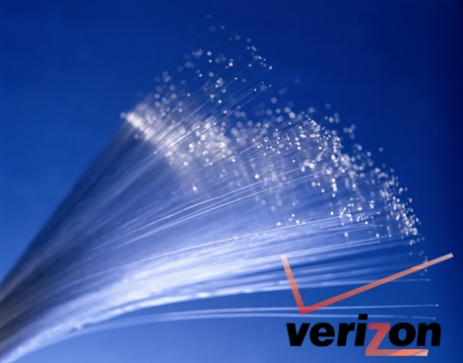Verizon Doubts Cablevision's 101 Mbps Internet
Verizon poopoos Cablevision's hot new 101 Mbps DOCSIS 3.0 service
Cablevision wowed us all earlier this week when it announced that it would be offering a 101 Mbps cable internet service to its customers starting May 11 for $100 a month.
Even more impressive, perhaps, is word that its 101 Mbps would be uncapped – particularly given how cable providers such as Time Warner Cable (and even smaller ISPs like Sunflower Broadband) are all about restrictions.
Verizon isn’t convinced by Cablevision’s claims of speed, however. Verizon’s PR man Eric Rabe wrote in the company’s policy blog and post skeptical of Cablevision’s service promise.
“With today’s technology, you don’t have to break much of a sweat to deliver 100 Mbps to a few customers,” Rabe wrote. “But given the inherent limits of the cable platform, a cluster of bandwidth junkies living near each other could be a real problem. One estimate is that a single 101 Mbps customer would use some 60% of the capacity in a neighborhood. Other users? Outta luck.”
“What happens when a customer with that speed hits the much slower Internet?” Rabe posed. “So Cablevision is offering very high speed service to a very limited number of customers when there is little evidence of market demand for the speed. It is a parlor trick.”
Rabe goes on to say that a fiber optic is the future of networking – which few will contest – but also points out that many parts of the internet are still connected together at speeds slower than 100 Mbps, saying that is why customers aren’t demanding speeds in the 100 Mbps range today.
“For now, CVC’s leap to 101 Mbps is about market positioning and bragging rights rather than delivering a useful service to a mass customer market,” Rabe said.
Get Tom's Hardware's best news and in-depth reviews, straight to your inbox.
In the end though, Rabe realizes that competition such as this is good for the consumer, as he adds, “Competition is a key innovation driver, so in that sense FiOS along with CVC's product and the ultra-high-speed services of others, have the potential to spur the entire industry to breed new ideas at all levels…applications, content, information as well as transport.”
-
geminireaper Yeah good luck having more than one person on a whole node with the 101 mbps. You go to sign up for it and they are like sorry your neighbor already has it. your out of luck. Thats why FioS will always be better. They already have a 50/20 package and are testing 100/30 in select areas. Best part is that its your own bandwidth..you dont have to share with your neighborsReply -
jsloan what do you expect to hear from verizon pr man, that their competition has an amazing service that everyone should buy. personally i don't know if they have anything more than hype, but i'll wait for consumers to tell us how it goes and not a pr man from verizon. who knows maybe they have something, for years verizon and other pushed dsl when cable turned out to be a better deal, i got better performance at a lower cost than my friends with dsl, sure fios is nice, but their is theory and then reality, lets wait and see maybe they got something more than smoke and mirrors.Reply -
makotech222 Too bad comcast and at&t are blocking out verizon from chicago-land area So i wont be seeing it in my lifetime.Reply -
Platypus Parlor tricks are something every company uses... even Verizon. It makes Verizon look ridiculous and hypocritical to say Cablevision is playing games with rhetoric.Reply -
mavroxur The idea of 101mbit cable internet access is interesting, but the thought of several of these connections in a small area (like an apartment complex) makes me wonder how much of the 101mbit you're actually going to see. You start talking about several gigabits worth of traffic on a single node, it just seems like you're asking for problems imo. It's not really the "your neighbor has it so you're screwed" idea that should matter because that's really insignificant. It's the 40 people in a 400 unit apartment complex, down the street from the university, that's full of students, that are consuming 4+ gigabits by themselves that makes me wonder (in addition to the huge number of people in that same complex that would be sporting cheapie 10mbit or whatever cable). I seriously doubt the cable company is going to bother putting in several nodes or a super high capacity node at a single apartment complex to cover the massive bandwith use.Reply -
joex444 Verizon's long-standing criticism of cable has been the "you share the bandwidth with your neighbors" argument. While technically true, I have yet to see any time in the past, well, its 8 years now with cable that my connection has run anything less than peak. Now it may be that I'm in a suburban area with a bunch of people who just check the email and do some light surfing, I'm not sure what my neighbors do. On the other hand it may be that cable is better equipped to handle the traffic than Verizon gives them credit for. After all, Verizon has DSL where the speed depends on how close you are to some location that has, in essence, their node. What's really worse, sharing a node capable of much higher speeds than your connection or having your bandwidth decay as a function of distance from a single location? Kind of a draw I think.Reply
As I said before though, the 101Mbps connection is *inherently* flawed. Think about it. What do most people connect with? From what I can tell, laptops sell the most and these come with 802.11G, a 54Mbps connection. How the heck are you going to get the 101Mbps connection to the Internet if you're only getting 54Mbps within your house? Even worse, I have yet to see traffic over WiFi reach more than ~50%, or about 25-30Mbps.
Let's suppose for a moment that you do use this on a desktop with a wired connection to a router. Your router, unless homebuilt with GbE ports, is going to run with 100Mbps cards. And these rarely are capable of handling more than 85-90% throughput, limiting you to 85-90Mbps even in this scenario.
So, its with this in mind that I propose the only way to utilize a 101Mbps connection is with a homebuild router (Linux is particularly well suited to this, ClarkConnect for example is what I use), with two or more Gigabit ports, and a Gigabit switch. But this is *only* if the modems Cablevision has include Gigabit ports themselves. If not, you'll never ever see more than 90Mbps out of this, which is inherently flawed and should be criticized. They could just as easily market it as a 1Gbps connection, as long as it has a 100BaseT port on the modem, you'll never see more than 90Mbps.
Finally, consider the price. At $100/mo, this is essentially twice as expensive as any other standard cable service. I have Comcast, and get a 16Mbps connection. For this price, I would expect that the nodes have half as many clients as Comcast. This would at a minimum ensure 32Mbps operation, assuming that Cablevision's nodes are as capable as Comcast's.
BTW... cable nodes feed into fiber. The actual medium doesn't make a difference, what Verizon was trying to argue against is the topology of cable, which as I said to start with is the same old argument they've had for years. Thus far, I have yet to see my neighbors impact my speeds at any time in the last 8 years so I have serious personal doubts about the validity of such an argument. I would, however, grab FiOS in a heartbeat due to the faster speeds and lack of a data cap (not that I use more than 250GB/mo, simply that I do not support restricted accounts). -
JD13 I have cable & live on a dead end road & do see slow downs at peak time around 7 to 10 PM. I'd love to get the new 101 package, but who knows if it will be available or not?Reply -
geminireaper Joex I see your point however i have friend who are tier 3 support for cable and yes there is inherently a flaw when it comes to nodes and total shared bandwidth. He says his company tries not to overload the node by keeping the nodes well below the recommended number of users..ie if a node can handle 32 connections safely..they put no more than 25 on it. I pay for road runner turbo with speeds *up too* 16m however depending on the time of day I get anywhre between 10-16m. I live in an apartment so depending if my neighbors are using it really does play true. Now you try to compound this by allow people to get the 101mbps connection. So now we are talking the bandwidth capabilities of 4-6 users and watch how fast those nodes fill up. Its nice on paper but only on paper. Also like the verizon rep mentioned....your still limited by slow web server connection speeds, latency and number of jumps. Even with great downloads cable has inherently crappy upload. Verizon has a 50/20 now and is working on 100/30. 101mbps is currently pushing the limits of docis 3.0. Currently we have not yet found a limit to fiber. I wish fios was in my area because then I can say buh bye to TWCReply -
dragonfang18 Gizmodo totally got this news first. But yeah... damn verizon, I live in a monopoly zone for them... Gotta send them a message and talk to them.Reply -
dragonfang18 I mean they have the capabilities of faster internet, but does not, yet they charge more than Cablevision.Reply

